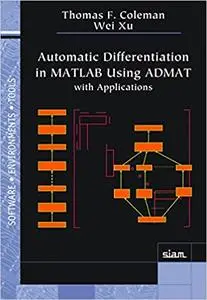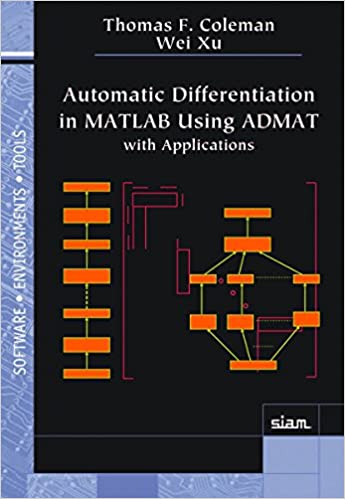Thomas F. Coleman, "Automatic Differentiation in MATLAB Using ADMAT with Applications "
English | ISBN: 1611974356 | 2016 | 117 pages | PDF | 3 MB
English | ISBN: 1611974356 | 2016 | 117 pages | PDF | 3 MB
The calculation of partial derivatives is a fundamental need in scientific computing. Automatic differentiation (AD) can be applied straightforwardly to obtain all necessary partial derivatives (usually first and, possibly, second derivatives) regardless of a code s complexity. However, the space and time efficiency of AD can be dramatically improved - sometimes transforming a problem from intractable to highly feasible - if inherent problem structure is used to apply AD in a judicious manner.
Automatic Differentiation in MATLAB using ADMAT with Applications discusses the efficient use of AD to solve real problems, especially multidimensional zero-finding and optimization, in the MATLAB environment. This book is concerned with the determination of the first and second derivatives in the context of solving scientific computing problems with an emphasis on optimization and solutions to nonlinear systems. The authors focus on the application rather than the implementation of AD, solve real nonlinear problems with high performance by exploiting the problem structure in the application of AD, and provide many easy to understand applications, examples, and MATLAB templates.
Audience: This book will prove useful to financial engineers, quantitative analysts, and researchers working with inverse problems, as well as to engineers and applied scientists in other fields.
Contents: Chapter 1: Fundamentals of Automatic Differentiation and the Use of ADMAT; Chapter 2: Products and Sparse Problems; Chapter 3: Using ADMAT with the MATLAB Optimization Toolbox; Chapter 4: Newton's Method and Optimization; Chapter 5: Structure; Chapter 6: Combining C/Fortran with ADMAT; Chapter 7: AD for Inverse Problems with an Application to Computational Finance; Chapter 8: A Template for Structured Problems; Chapter 9: R&D Directions; Appendix A: Installation of ADMAT; Appendix B: How Are Codes Differentiated?



